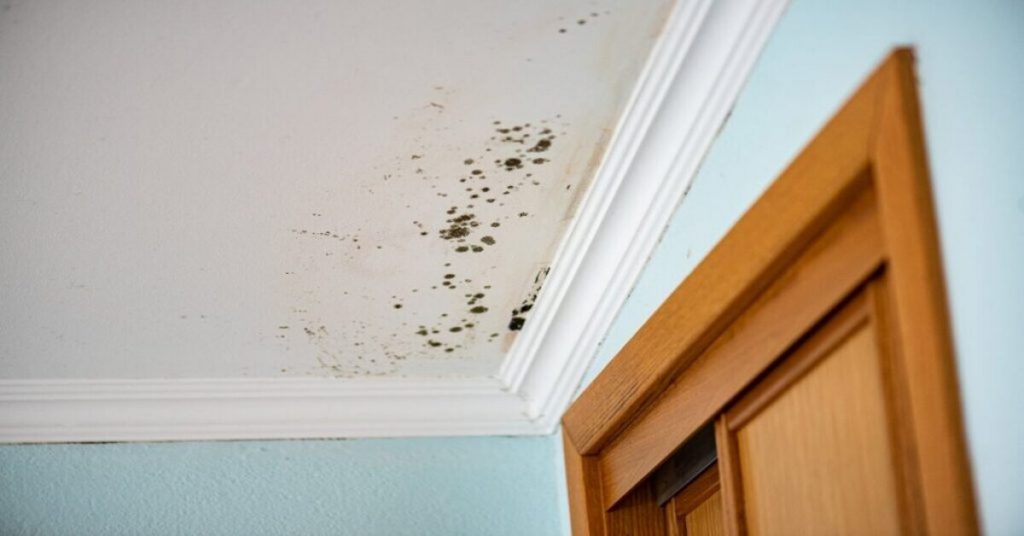Are you puzzled by the presence of condensation on your ceiling during the winter months? Dive into our comprehensive guide on “Condensation On Ceiling In Winter” to unravel the causes, effects, and effective solutions to address this common seasonal issue.

Deciphering the Causes
Understanding the Winter Conundrum
As the temperature drops outside, homes are susceptible to a variety of winter-related issues. One prevalent concern is the appearance of condensation on ceilings. Before exploring solutions, let’s delve into the factors that contribute to condensation in winter.
Common Causes
1. Temperature Differences
During winter, the temperature disparity between the warm interior of your home and the cold exterior creates conditions conducive to condensation. This phenomenon is especially noticeable on ceilings, where warm indoor air meets the cooler surface.
2. Inadequate Ventilation
Insufficient ventilation exacerbates condensation issues. When indoor air lacks proper circulation, moisture accumulates on surfaces, including ceilings. Areas with poor ventilation, such as bathrooms, kitchens, and basements, are particularly prone to condensation.
3. Humidity Levels
High indoor humidity levels amplify condensation problems. Activities like cooking, showering, and even breathing release moisture into the air. In winter, when cold surfaces are prevalent, this moisture can condense on ceilings.
4. Insulation Gaps
Inadequate insulation can contribute to condensation issues by allowing warm indoor air to come into contact with cold surfaces. Identifying and addressing insulation gaps is crucial to preventing condensation on the ceiling.
Effects of Condensation On Ceiling In Winter
1. Mold and Mildew Growth
Persistent condensation can lead to the growth of mold and mildew on the ceiling. These fungi thrive in damp environments, posing health risks and necessitating thorough remediation.
2. Structural Damage
Repeated exposure to moisture can compromise the structural integrity of the ceiling. Over time, this may result in damage, including sagging or deterioration.
3. Aesthetic Issues
Condensation can cause staining and discoloration on ceilings, impacting the aesthetic appeal of your living spaces. Addressing the root cause is essential to prevent unsightly damage.
Read too: A Step-by-Step Guide to Installing Rockwool Insulation in Your Ceiling: Unlock Energy Efficiency
Managing Condensation On Ceiling In Winter: Effective Solutions
1. Improve Ventilation
Enhance ventilation in your home by using exhaust fans in bathrooms and kitchens. Consider installing a whole-house ventilation system to ensure consistent air circulation.
2. Control Indoor Humidity
Monitor and control indoor humidity levels using dehumidifiers. Properly sized units strategically placed in areas prone to condensation can significantly reduce moisture in the air.
3. Insulate Ceilings
Address insulation gaps to prevent warm indoor air from contacting cold surfaces. Ensure that your home’s insulation is adequate for the climate in your region.
4. Seal Air Leaks
Identify and seal air leaks around windows, doors, and other openings. This minimizes the infiltration of cold air and helps maintain a more consistent temperature indoors.
5. Use Vapor Barriers
Install vapor barriers to limit the transfer of moisture through walls and ceilings. This can be especially effective in preventing condensation in areas with high humidity levels.
Conclusion: Creating a Winter Haven Free from Condensation
In conclusion, understanding and managing condensation on the ceiling in winter involve addressing the root causes and implementing effective solutions. By improving ventilation, controlling indoor humidity, insulating ceilings, sealing air leaks, and using vapor barriers, you can create a winter haven that is free from the damaging effects of condensation. Stay informed, take proactive measures, and enjoy a comfortable and moisture-free home during the winter months.